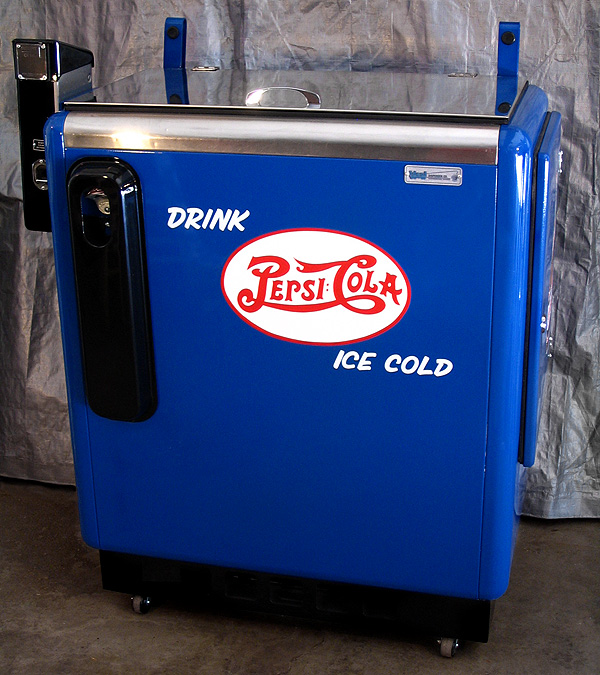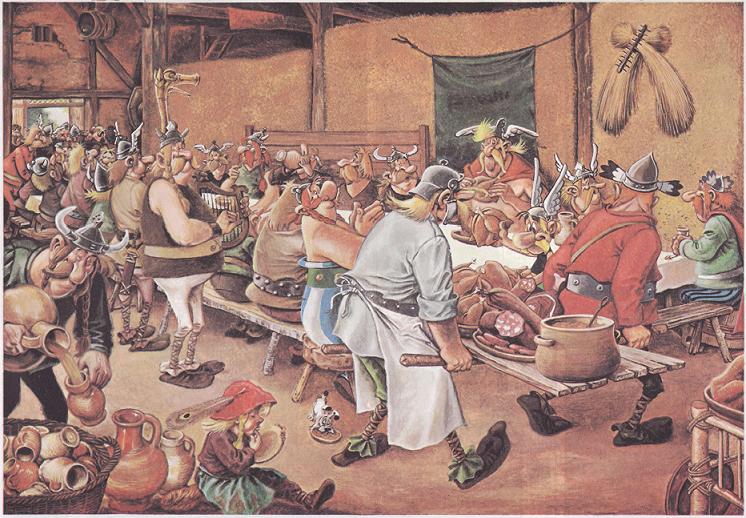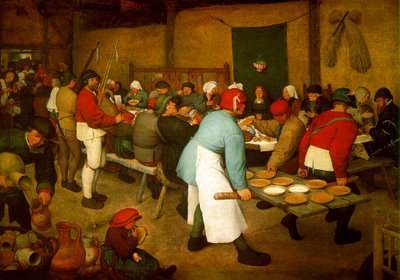Το προκαθορισμένο μενού (η υποχρεωτική κατανάλωση συγκεκριμένων πιάτων προς συγκεκριμένη τιμή που επιβάλλεται συνήθως στα εστιατόρια τις ημέρες των γιορτών για να βγάλουν οι μαγαζάτορες τα σπασμένα άλλων ημερών, όταν δεν αναβάλλονται οι γιορτές), το γνωστό σαν ταμπλ ντοτ (ή ταμπλ ντ' οτ) μας ήρθε από τη Γαλλία και σαν συνήθεια και σαν λέξη. Στα χάνια του μεσαίωνα, μέχρι να εμφανιστούν τα πρώτα εστιατόρια με μενού «α λα καρτ», οι πελάτες κάθονταν όλοι μαζί σ' ένα τραπέζι (table de l'hoste, όπως λεγόταν τότε, το «τραπέζι του οικοδεσπότη») και μοιράζονταν όλοι ένα κοινό μενού — και έτρωγε περισσότερο ο πιο γρήγορος (αν σας θυμίζει κάτι).
Υπάρχει και ο λανθασμένος τύπος «νταμπλ ντοτ»... (όπως επισήμαινα πριν τρία χρόνια):

και τώρα πλέον και άλλες ενδιαφέρουσες ετυμολογήσεις.
Παραθέτω ενδιαφέρουσα περιγραφή των συνθηκών της εποχής από εδώ:
http://www.arts.cornell.edu/econ/kiefer/Restaurant.PDF
Υπάρχει και ο λανθασμένος τύπος «νταμπλ ντοτ»... (όπως επισήμαινα πριν τρία χρόνια):

και τώρα πλέον και άλλες ενδιαφέρουσες ετυμολογήσεις.
Παραθέτω ενδιαφέρουσα περιγραφή των συνθηκών της εποχής από εδώ:
http://www.arts.cornell.edu/econ/kiefer/Restaurant.PDF
Revolutionary Paris is often cited as the birthplace of the modern-day restaurant, but restaurants existed long before the French Revolution in other locations when economics and social mores made them feasible. […]
The restaurant as it is known today had its origin in the taverns, inns, traiteurs (cookshops), and boarding houses of an earlier day. Those establishments offered food service (along with alcoholic beverages or lodging) well before the appearance of the modern restaurant, with its cook-to-order menu. Those primitive restaurants existed in Paris and in other commercial cities in Europe (and elsewhere) well before the eighteenth century.
Paris was the dominant commercial and cultural center at the time of the emergence of the restaurant in Europe. Taverns made money principally from alcohol sales; inns and boarding houses from renting rooms, as well as serving food. These institutions served a table d’hôte at fixed hours and a set price. Often the diners were a regular crowd who knew how to sit near the table’s center. Meals could be intimidating to strangers, who sat at the common table with the regulars. A quick hand was essential, as table service was “family style,” and portioning was competitive. There was no possibility of choice in ordering— indeed, no ordering at all.
One ate what one could get from the common serving. Payment was for a place at the table, rather than for dishes ordered or eaten. Regulars would sometimes be allowed to run a tab and pay from time to time. Strangers would be quoted prices on the spot, inviting bargaining and leading travelers to complain (reasonably) that they were being exploited. Visitors reported uniformly low quality, either because of lack of variety, poorly stored food, or improper cooking. Unpredictable table companions were another cause for concern. Dining times varied from establishment to establishment, meaning that travelers would occasionally have to try several places to find a meal.
Taverns—unlike roadhouses—had a long tradition of charging for items ordered—and providing drinks to order. That concept was a necessary precursor to the modern-day restaurant. With economic growth, the forces were in place to extend this concept to dining. Pressures leading to the creation of the restaurant— with its individual tables, individual orders, flexible dining times convenient to the patrons, and payment by item ordered—came from both those who demanded food away from home and from its suppliers. From the diner’s point of view, the restaurant format offered a kind of privacy. The diner could eat alone or with companions of his or her choosing. The table d’hôte format is more social, but the mix of companions facing a stranger coming to an inn or cookshop wasn’t always ideal for outsiders. More important, the diner in a restaurant could order, eat, drink, and pay for only and exactly what she wished. In contrast, in the table d’hôte format one ate what one could grab of what was served. Finally, the restaurant patron could eat at the time of his convenience, rather than when the host chose to serve the meal. Of course, the diner had to be willing to pay for that privacy, convenience, and choice.
The restaurant as it is known today had its origin in the taverns, inns, traiteurs (cookshops), and boarding houses of an earlier day. Those establishments offered food service (along with alcoholic beverages or lodging) well before the appearance of the modern restaurant, with its cook-to-order menu. Those primitive restaurants existed in Paris and in other commercial cities in Europe (and elsewhere) well before the eighteenth century.
Paris was the dominant commercial and cultural center at the time of the emergence of the restaurant in Europe. Taverns made money principally from alcohol sales; inns and boarding houses from renting rooms, as well as serving food. These institutions served a table d’hôte at fixed hours and a set price. Often the diners were a regular crowd who knew how to sit near the table’s center. Meals could be intimidating to strangers, who sat at the common table with the regulars. A quick hand was essential, as table service was “family style,” and portioning was competitive. There was no possibility of choice in ordering— indeed, no ordering at all.
One ate what one could get from the common serving. Payment was for a place at the table, rather than for dishes ordered or eaten. Regulars would sometimes be allowed to run a tab and pay from time to time. Strangers would be quoted prices on the spot, inviting bargaining and leading travelers to complain (reasonably) that they were being exploited. Visitors reported uniformly low quality, either because of lack of variety, poorly stored food, or improper cooking. Unpredictable table companions were another cause for concern. Dining times varied from establishment to establishment, meaning that travelers would occasionally have to try several places to find a meal.
Taverns—unlike roadhouses—had a long tradition of charging for items ordered—and providing drinks to order. That concept was a necessary precursor to the modern-day restaurant. With economic growth, the forces were in place to extend this concept to dining. Pressures leading to the creation of the restaurant— with its individual tables, individual orders, flexible dining times convenient to the patrons, and payment by item ordered—came from both those who demanded food away from home and from its suppliers. From the diner’s point of view, the restaurant format offered a kind of privacy. The diner could eat alone or with companions of his or her choosing. The table d’hôte format is more social, but the mix of companions facing a stranger coming to an inn or cookshop wasn’t always ideal for outsiders. More important, the diner in a restaurant could order, eat, drink, and pay for only and exactly what she wished. In contrast, in the table d’hôte format one ate what one could grab of what was served. Finally, the restaurant patron could eat at the time of his convenience, rather than when the host chose to serve the meal. Of course, the diner had to be willing to pay for that privacy, convenience, and choice.









